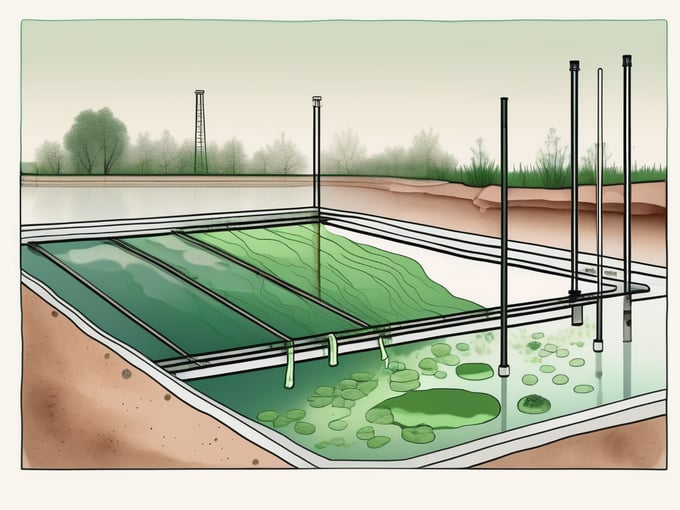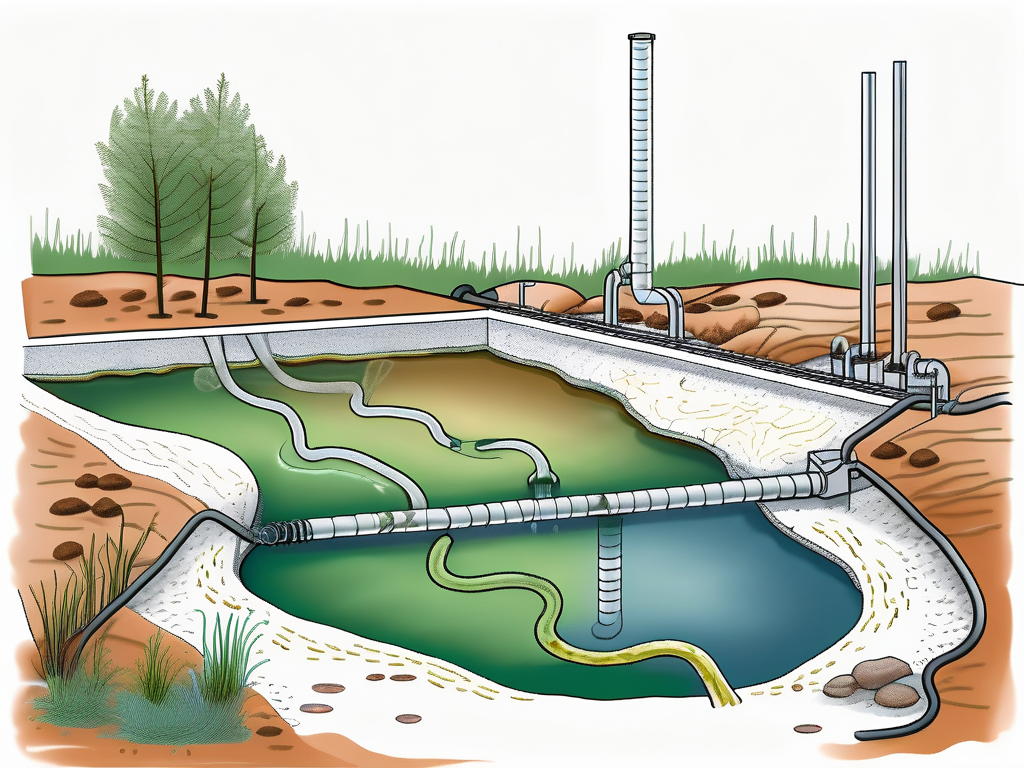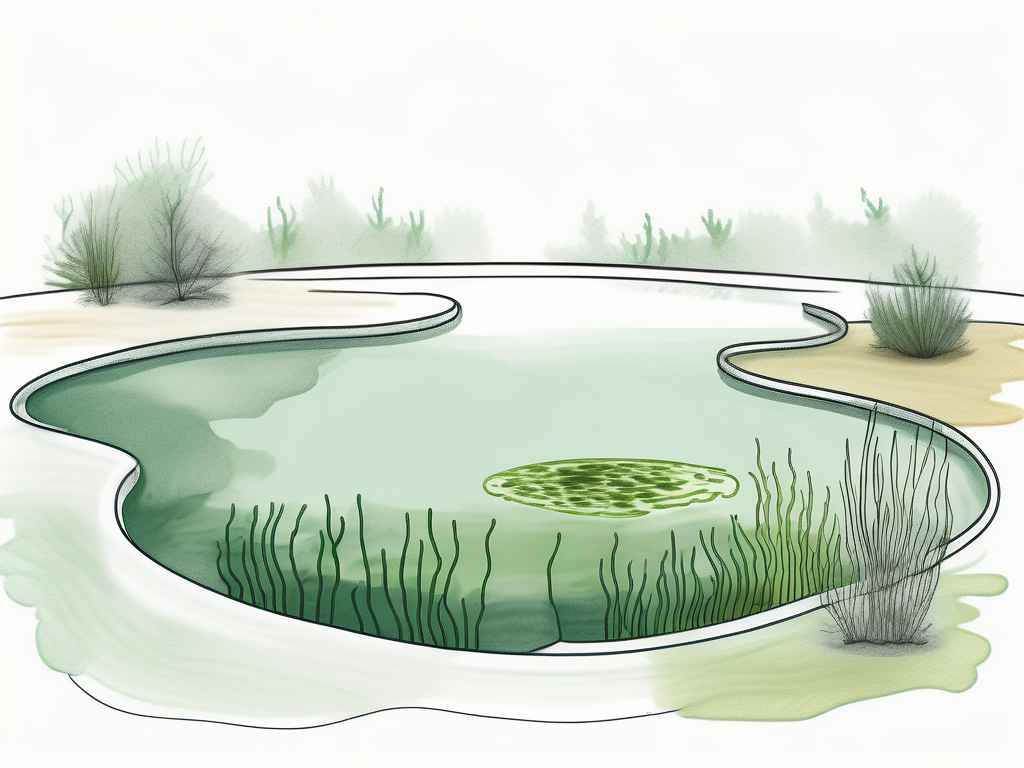
Oxidation Pond: Wastewater Treatment Explained
In the realm of wastewater treatment, the term 'Oxidation Pond' holds significant importance. It is a type of biological wastewater treatment system that is designed to treat wastewater through the natural process of biological oxidation. This article delves into the comprehensive understanding of oxidation ponds, their design, operation, advantages, and the challenges associated with them.
Wastewater treatment is a crucial process that ensures the safe disposal of waste materials into the environment. Oxidation ponds, also known as stabilization ponds or lagoons, are one of the most cost-effective and efficient methods of treating wastewater, especially in areas with ample land and sunlight. They are widely used in rural and semi-urban areas for the treatment of domestic and industrial wastewater.
Understanding Oxidation Ponds
Oxidation ponds are large, shallow bodies of wastewater that are exposed to the atmosphere and allow sunlight penetration. They are designed to hold wastewater for a specific retention time, typically between 5 to 50 days. The primary purpose of these ponds is to allow the natural processes of sunlight, bacteria, and algae to interact and break down the organic matter present in the wastewater.

The process of biological oxidation in these ponds is facilitated by two main types of microorganisms: aerobic bacteria and algae. Aerobic bacteria consume organic matter in the wastewater and produce carbon dioxide. This carbon dioxide is then used by algae for photosynthesis, which in turn produces oxygen. The oxygen is then used by the bacteria to continue the process of breaking down the organic matter, thus creating a symbiotic relationship.
Types of Oxidation Ponds
There are three main types of oxidation ponds: aerobic, facultative, and anaerobic. The type of pond used depends on the amount of organic matter in the wastewater, the climate, and the available land area.
Aerobic ponds are shallow ponds that allow oxygen to be present throughout the water column due to the action of wind and photosynthesis by algae. Facultative ponds are slightly deeper and have an aerobic surface layer and an anaerobic bottom layer. Anaerobic ponds are the deepest and are used for the treatment of high-strength wastewaters.
Design of Oxidation Ponds
The design of oxidation ponds is a critical factor that determines their efficiency. The size and depth of the pond, the retention time, and the climatic conditions are some of the factors that need to be considered during the design process.
The size of the pond is determined by the volume of wastewater to be treated and the desired retention time. The depth of the pond is typically between 1 to 2 meters for aerobic ponds and up to 5 meters for anaerobic ponds. The shape of the pond can be rectangular or irregular, depending on the available land area.
Operation of Oxidation Ponds
The operation of oxidation ponds involves the inflow of wastewater, the retention and treatment of wastewater, and the outflow of treated water. The inflow of wastewater is usually controlled by a series of gates or valves to ensure a steady flow into the pond.
The retention time in the pond allows the biological processes to take place. During this time, the organic matter in the wastewater is broken down by bacteria and algae. The treated water is then discharged from the pond through an outlet structure.
Maintenance of Oxidation Ponds
Maintenance of oxidation ponds is relatively low compared to other wastewater treatment systems. However, regular monitoring of the pond conditions, such as the water level, color, odor, and the presence of algae, is necessary to ensure efficient operation.
Periodic removal of sludge from the bottom of the pond is also required. This sludge is usually composed of inorganic materials and dead microorganisms that have settled at the bottom of the pond. The sludge can be removed manually or by using specialized equipment.
Advantages of Oxidation Ponds
Oxidation ponds offer several advantages over other wastewater treatment systems. They are cost-effective, require low energy input, and have low maintenance requirements. They are also capable of treating a wide range of pollutants, including organic matter, nutrients, and pathogens.

Furthermore, oxidation ponds can be integrated into the landscape and provide habitat for wildlife. They can also be used for recreational purposes, such as bird watching, and can contribute to the aesthetic value of the area.
Challenges of Oxidation Ponds
Despite their advantages, oxidation ponds also have some challenges. They require a large land area, which can be a limiting factor in densely populated areas. They are also influenced by climatic conditions, such as temperature and sunlight, which can affect their efficiency.
Additionally, the discharge of treated water from oxidation ponds can cause environmental issues if not properly managed. This includes the potential for nutrient enrichment in receiving waters, which can lead to eutrophication and the growth of harmful algal blooms.
Future of Oxidation Ponds
The future of oxidation ponds looks promising, with ongoing research focusing on improving their efficiency and reducing their environmental impact. This includes the development of hybrid systems that combine oxidation ponds with other treatment technologies, such as constructed wetlands and membrane bioreactors.
Furthermore, there is growing interest in the use of oxidation ponds for the recovery of resources, such as water, nutrients, and energy. This aligns with the concept of a circular economy, where waste is seen as a resource rather than a problem.
Conclusion
In conclusion, oxidation ponds are a valuable tool in the field of wastewater treatment. They offer a cost-effective and efficient method of treating wastewater, with the potential for resource recovery and integration into the landscape. However, their successful implementation requires careful design, operation, and maintenance to overcome the associated challenges.
As we move towards a more sustainable future, the role of oxidation ponds in wastewater treatment is likely to become even more important. With ongoing research and development, we can expect to see further improvements in their efficiency and a reduction in their environmental impact.



